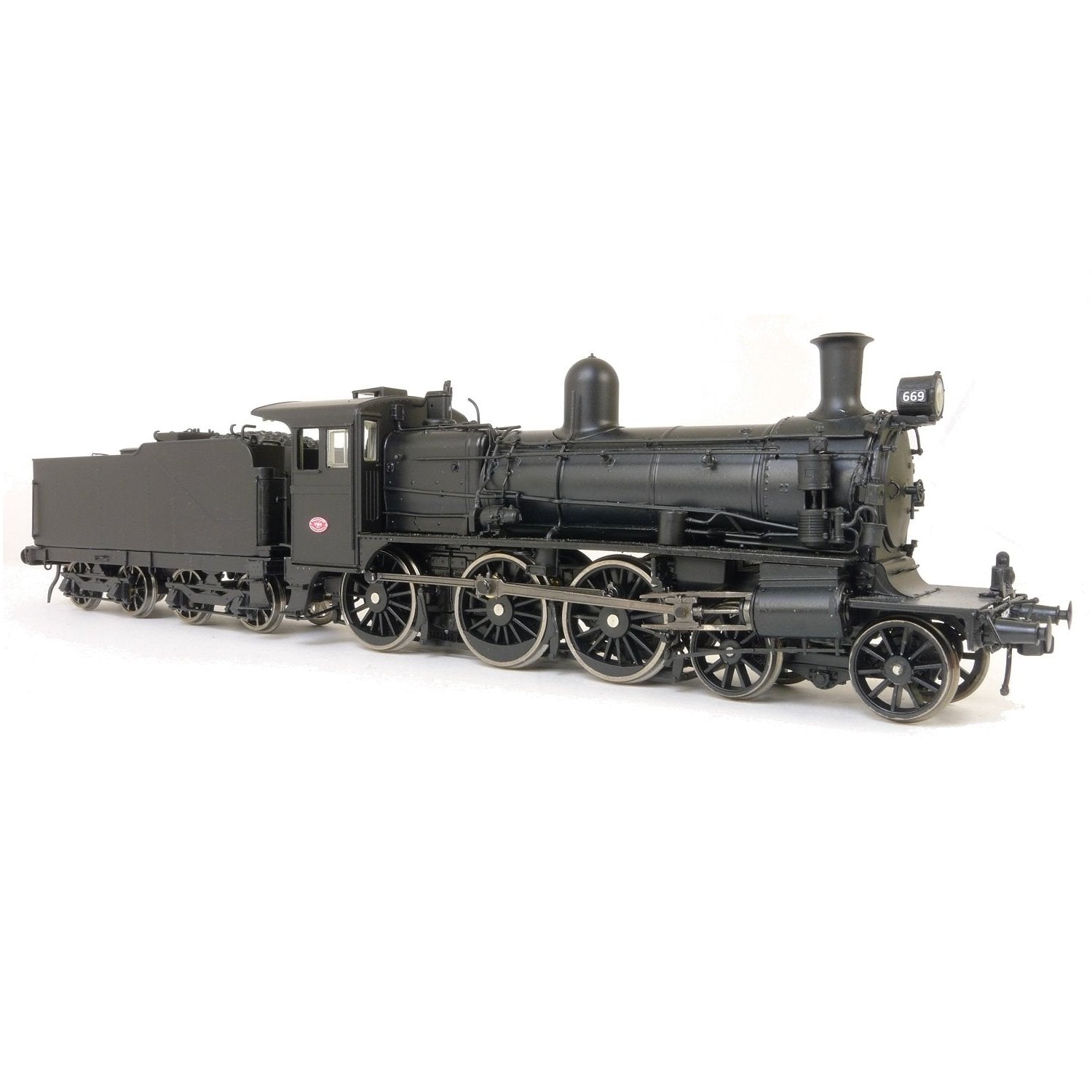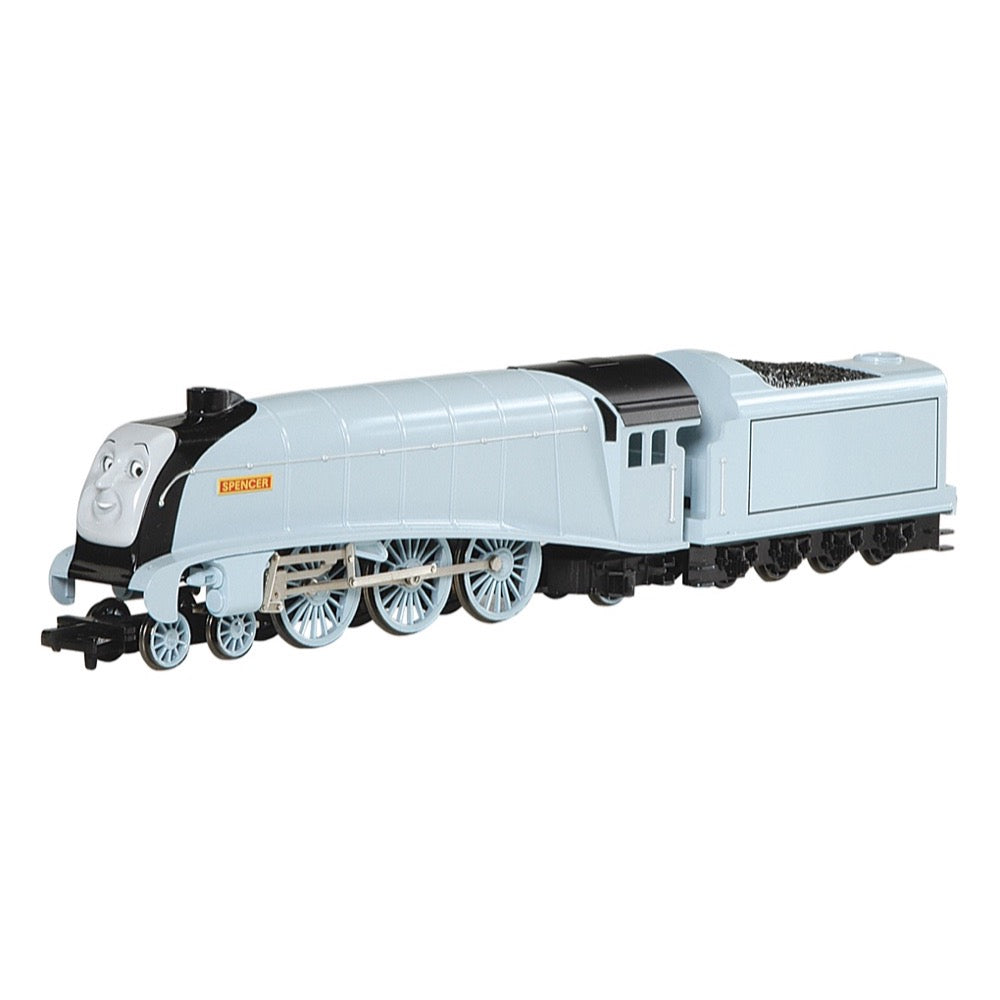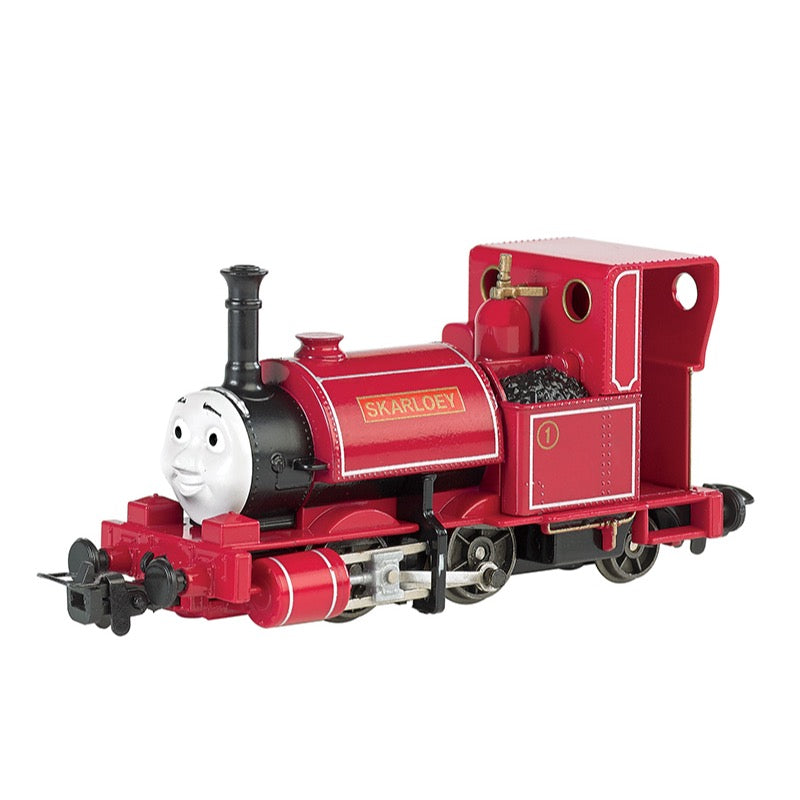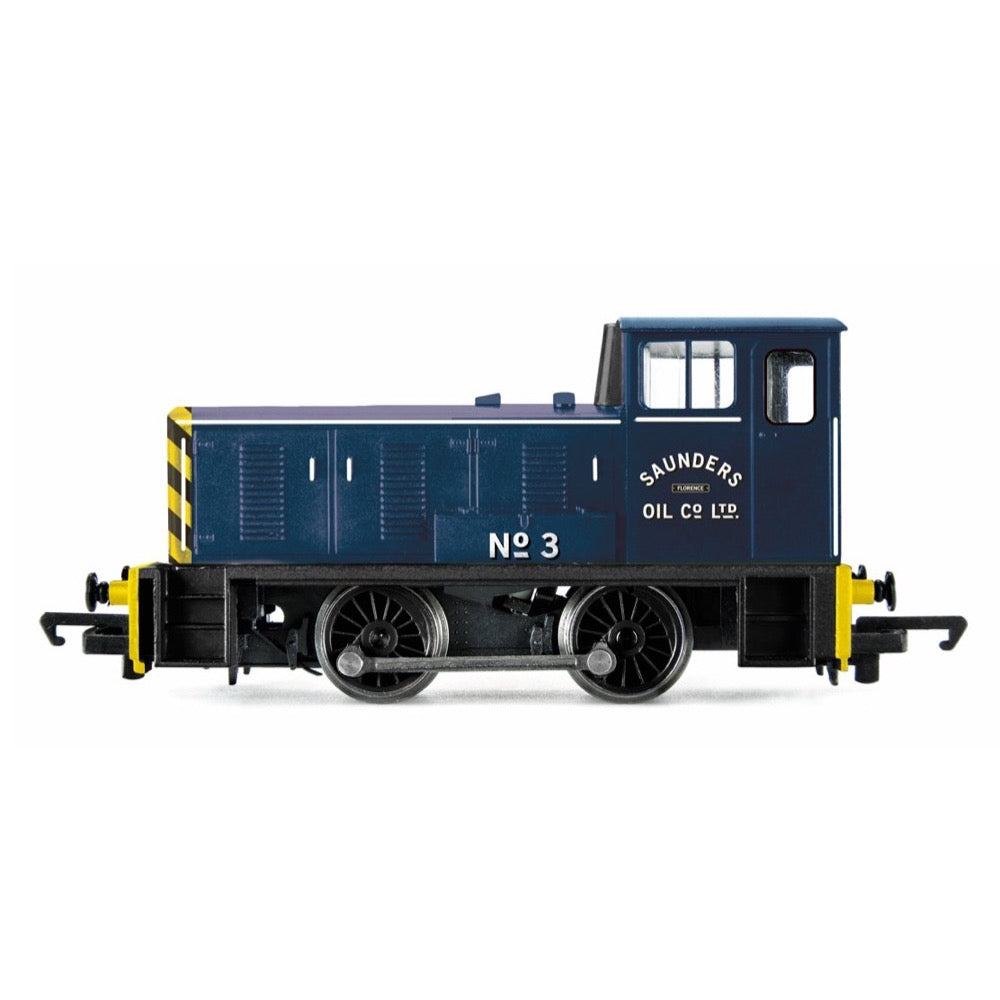
Hornby R30381 RailRoad Saunders Oil Co Ltd Bagnall 0-4-0DH Florence 1971 - 1996 Locomotive
29.00
$
<p>Enjoy this unique ‘Florence’ locomotive trundling around the tracks on your layout. Featuring a fictional blue ‘Saunders Oil Company Ltd.’ livery, this is a delightful, one-of-a-kind locomotive to add to your collection. A vac pipe accessory bag is included.</p>
<h3>Specification</h3>
<ul>
<li>Item Length - Without Packaging (cm): 11</li>
<li>Item Height - Without Packaging (cm): 5</li>
<li>Item Width - Without Packaging (cm): 3.5</li>
<li>Item Weight - Without Packaging: 0.08</li>
<li>Item Scale: 1:76 Scale 00 Gauge</li>
<li>Finish: Painted</li>
<li>Colour: Blue</li>
<li>Gauge: OO</li>
<li>Operator: Hornby</li>
<li>Designer: Hornby</li>
<li>Wheel Configuration: 0-4-0</li>
<li>Livery: Private Owner</li>
<li>Minimum Curve (mm): Radius 2</li>
<li>Motor: 3 Pole</li>
<li>Number of Parts: 1</li>
<li>Buffer Type: Moulded Plastic Buffers</li>
<li>Coupling Type: Wide Tension Lock</li>
</ul>
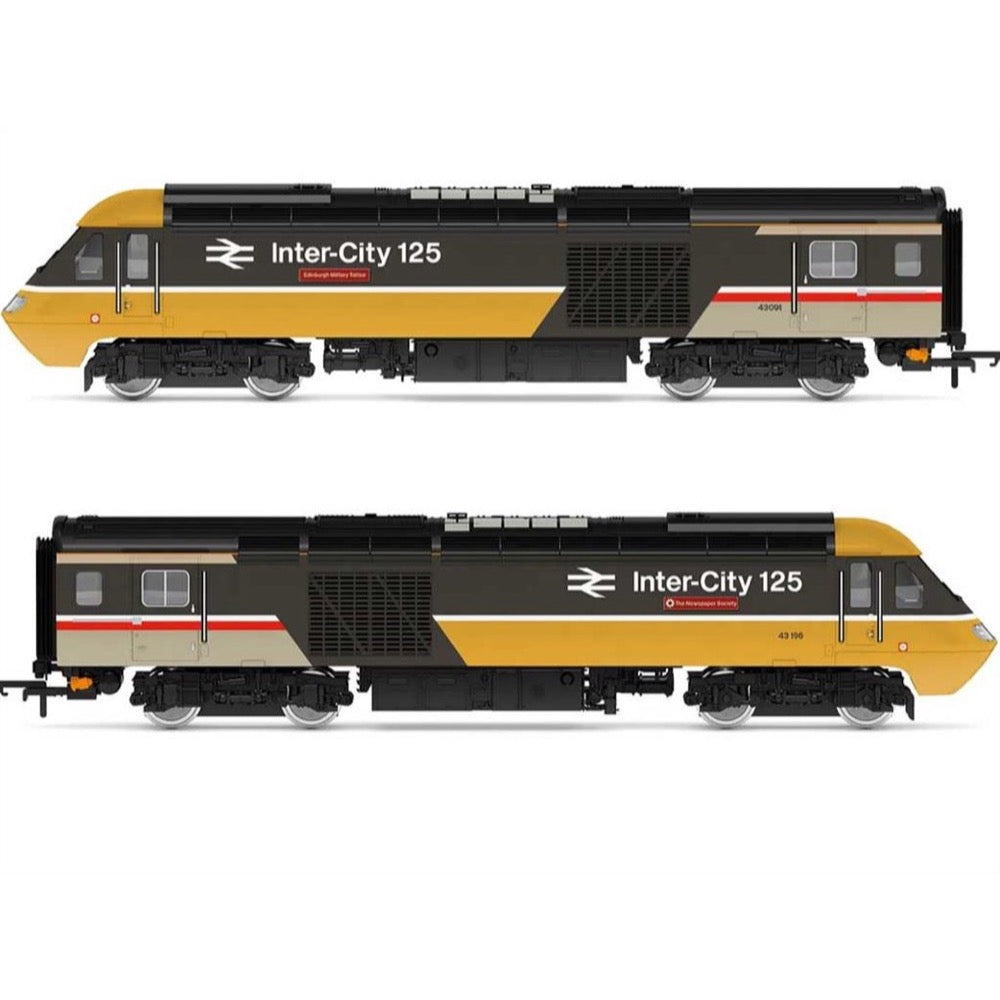
Hornby R30097TXS OO BR InterCity Executive Class 43 HST Train Pack Era 7 Sound Fitted Locomotive
331.00
$
<p>Originally conceived as a cheaper, more reliable alternative to the Advanced Passenger Train in the early 1970s, the British Railways Board authorised the development of a prototype High Speed Diesel Train, with two locomotives designated as Class 41. These aerodynamic power cars were constructed by British Railways Engineering Ltd at their Crewe Works and emerged in June and August 1972, fitted with Paxman Valenta 12RP200L engines, developing 2,250 hp.</p><p>The power cars, having initially been numbered 41001 and 41002, were later given the coaching stock numbers 43000 and 43001 for operating trials on the Eastern Region and subsequent transfer to the Western Region. Following evaluation and a change of name to High Speed Train, British Rail placed orders for similar trains for use on the Western, Eastern, Scottish and London Midland Regions.</p><p>When originally built at BREL's Crewe Works, the InterCity 125 units were considered to be diesel multiple units and allocated as Class 253 to the Western Region and Class 254 for the Eastern Region. With the introduction of Trailer Guard Second (TGS) carriages, later power cars had no guard's equipment installed and by 1987 most power cars were simply classified as Driving Motor (DM), although they still had luggage van space, retaining a window by the luggage door on each side.</p><p>Following problems with the power cars and the operational ease of removing power cars to perform scheduled maintenance, unit formations were abandoned, resulting in the Class 43 locomotive prefix being adopted. The 197 Class 43 power cars produced between 1976 and 1982 were numbered 43002 to 43198 and are officially the fastest diesel units in the world.</p><p>The units have an absolute maximum speed of 148mph (238kph), which is the current world diesel traction record, set on November 1, 1987. In 1987, for trial purposes, eight of the Class 43s were converted for use as Driving Vehicles with the Class 89 and Class 91 locomotives. The power cars were fitted with buffers and Time Division Multiplex (TDM) equipment that allowed them to directly control the other locomotive.</p><p>Following the delivery of British Rail's Mk 4 coaching stock, the TDM equipment was removed and the power cars reverted to their normal duties, retaining their buffers. During the late 1990s, twenty-five of the Class 43s were updated with Paxman 12VP185L engines in an attempt to reduce fuel consumption and emissions; however these proved to be less reliable in service than was hoped.</p><p>43196 was outshopped in 1982 in the BR Intercity grey livery. Shortly after the locomotive would be re-painted into the InterCity Swallow livery in which it would see out the end of its service with BR. After privatisation, the locomotive would wear the Midland Mainline, Virgin and GWR liveries. As of 2022 the locomotive is in storage at Laira. Over its lifetime the locomotive would carry two different names.</p><p>43091 would enter service in 1978 and would carry both the BR blue and grey and BR InterCity liveries within the first ten years of its life. Assigned the name 'Rio Pioneer' the locomotive would never have its original name plates fitted. In 1985 it would be renamed to 'Edinburgh Military Tattoo', a name it would carry for three years. The locomotive would last be in service with the GWR, before being placed into storage as of 2022.</p><p>Upgraded for 2023, the Hornby Class 43 pack includes lights front and rear and well as motorised fans in the roof and a kinomatic coupling system. Fitted with a 5 pole motor and dual flywheels the motor car is all wheel drive. Both units are fitted with 21 pin DCC sockets and pre-fitted dual speakers which allow for the use of sound on DCC as well as offering greater control of the lights and fans.</p><h3>Specifications</h3><ul>
<li>Item Length - Without Packaging (cm): 46</li>
<li>Item Height - Without Packaging (cm): 5</li>
<li>Item Width - Without Packaging (cm): 3.5</li>
<li>Item Weight - Without Packaging: 0.72</li>
<li>Item Scale: 1:76 Scale 00 Gauge</li>
<li>Finish: Painted</li>
<li>Colour: Grey and Yellow</li>
<li>Gauge: OO</li>
<li>DCC Status: DCC Ready 21 pin socket</li>
<li>Operator: BR</li>
<li>Designer: Sir Kenneth Grange</li>
<li>Wheel Configuration: Bo-Bo</li>
<li>Livery: BR Intercity Grey</li>
<li>Minimum Curve (mm): Radius 2</li>
<li>Motor: 5 Pole Skew wound</li>
<li>Number of Parts: 2</li>
<li>Buffer Type: Sprung Metal Buffers</li>
<li>Coupling Type: NEM Tension Lock</li>
<li>Hornby Decoder Compatibility Primary: HM7000-21TXS: Bluetooth® & DCC Sound Decoder (21-pin)</li>
</ul>
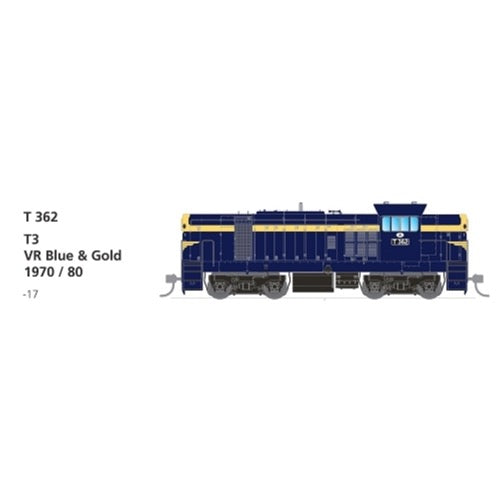
SDS Models HO T362 V/Line Orange T3 Series T Class Locomotive DCC Sound
173.00
$
<p>The Victorian Railways received their second series of T class locomotives from late 1959, these were mechanically similar to the first series but featured a new raised height operating cab layout. This new style of raised cab design featured throughout the remainder of the T class series.</p>
<p>SDS Models are pleased to offer the inclusion of the T-2 series within our range of Victorian Railways T class models.</p>
<p>Based upon the tried and proven Austrains T class mechanism we have comprehensively retooled almost every item, bringing the model inline with our exacting scale and design standards. Some 220 new or re-made parts are involved in the production of the four series we are offering below. All the models now feature prototypically correct width long hoods, series specific and appropriate fuel tank and battery box combinations, improved appearance bogie side frames and brake shoe / wheel tread alignment and a host of other design detail enhancements.</p>
<h3>Features</h3>
<ul>
<li>Highly detailed Ready-to-Run HO gauge model</li>
<li>Precisely tooled plastic body (ABS)</li>
<li>Genuine Kadee scale head whisker coupler</li>
<li>Separately applied handrails and detail parts</li>
<li>5-Pole skew wound electric motor and dual flywheels</li>
<li>All wheel drive and electrical pickup</li>
<li>LED head and marker lights</li>
<li>All models come standard with an MTC 21 pin motherboard</li>
<li>Exclusive and locally recorded EMD sounds by DCCSound</li>
</ul>
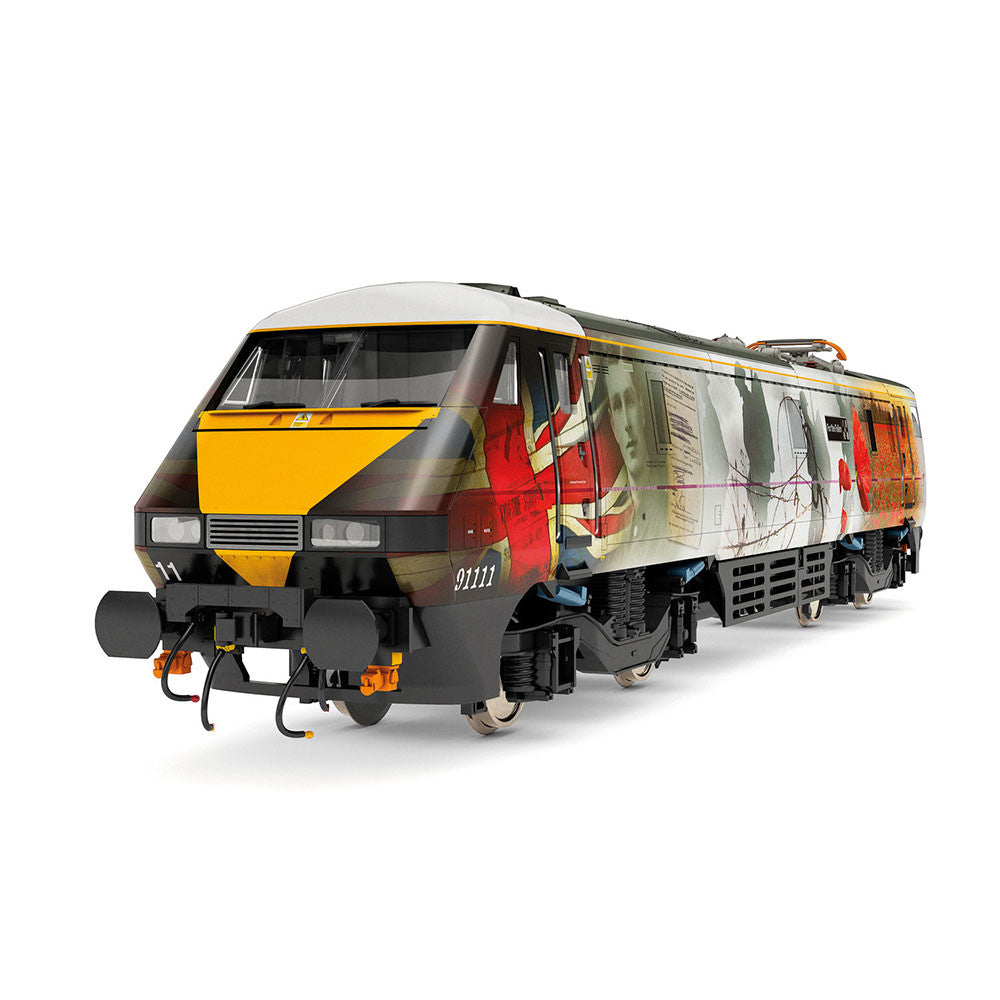
Hornby R3892 OO VTEC Class 91 Bo-Bo 91111 For the Fallen Locomotive
135.00
$
<p>It is estimated that the railway in Britain lost 20,000 men during the First World War. Many railway stations in Britain have a memorial to their sacrifice, listing the names of those who worked on the railway but never returned to their jobs when the guns fell silent.</p>
<p>To mark the contribution of, and the lives lost by, regiments up and down the East Coast Mainline route during the First World War, East Coast held a ceremony at Newcastle station on 14 October 2014 to unveil 91111 in a special livery scheme created by designer Paul Gentleman with the new name of 'For the Fallen'. The nameplate of the locomotive bears the crests of regiments local to the East Coast route and 91111's livery depicts soldiers, artefacts and tributes commemorating the contribution they made to the war effort.</p>
<h4>Includes</h4>
<ul>
<li>1x Electric Locomotive</li>
</ul>
<h4>Technical Specifications</h4>
<ul>
<li>Colour: Red</li>
<li>DCC status: DCC Ready 8 pin socket</li>
<li>Finish: Painted</li>
<li>Gauge: OO</li>
<li>Livery: For the Fallen</li>
<li>Minimum radius curve: 2nd Radius (438mm)</li>
<li>Motor: 5 pole skew wound</li>
<li>Name: For the Fallen</li>
<li>Power pickup: All wheels</li>
<li>Coupling: NEM / Tension lock</li>
<li>Class: Class 91</li>
<li>Operator: Virgin Trains</li>
<li>Wheel arrangement: Bo-Bo</li>
<li>Designer: GEC/BREL</li>
</ul>
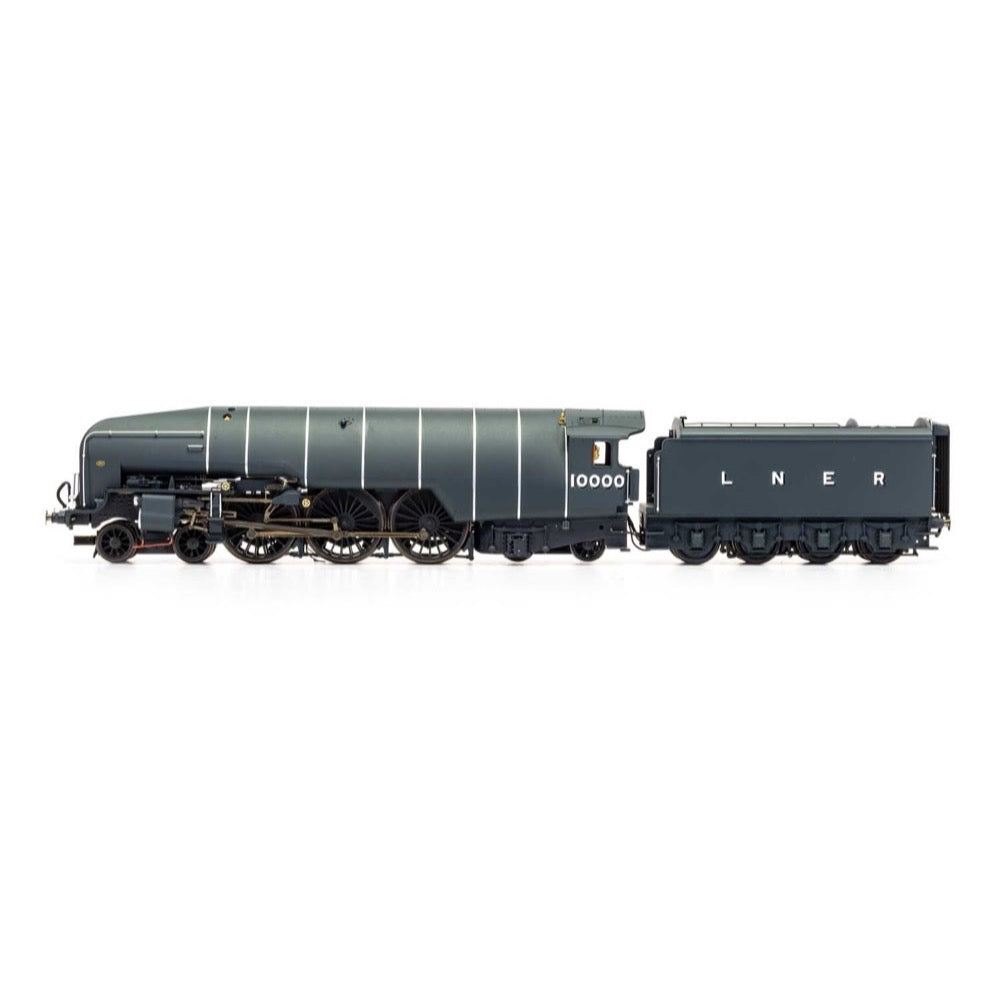
Hornby R3840 OO LNER Class W1 Hush Hush 4-6-4 10000 Battleship Grey Locomotive
175.00
$
<p>The first reference to 10000's designation as Class W1 was on 9 November 1926, but where the widely adopted name of 'Hush-Hush' came from is disputed. It could be that the nickname arose in the late summer of 1928, as news of Gresley's new locomotive began to leak out. However other sources suggest this was possibly an internal Darlington name that came from the distinctively quiet motion sound the loco made or even because of a mistaken caption that featured in a Path News item.</p>
<p>On 20 November 1929, nameplates were drawn up featuring the name British Enterprise and were cast soon after, but these plates were never fitted and the loco remained unnamed, being referred to as 'Hush-Hush' ever since. Yarrow's had completed the boiler in February 1929 and on April 3rd the chassis was moved from Darlington to Glasgow for testing, these being completed by October 1929 and it was during this period that wind tunnel tests led to the unusual front-end design that gave the W1 part of its distinctive appearance. Official photographs were released on December 10th and the first trial run took place on December 12th, followed by another on December 29th and 9 January 1930, the first trip to Kings Cross.</p>
<p>Although it was to be a further six months of trials though before 10000 finally entered traffic on June 20, 1930. Between June 1930 and May 29 1933, 10000 run 70,000 miles in service, from Kings Cross to Edinburgh, including the Flying Scotsman and Queens of Scots services, but in 1934 modifications and a general repair took 10000 out of service for just over a year, the locomotive returning to traffic on June 13, 1934. At the end of January 1935, a Kylchap double blastpipe and chimney was fitted which eventually required the fitting of a smoke lifter for better smoke clearance. On August 21, 1935, 10000 was returned to Darlington for the last time in its original form, having covered another 20,823 miles since June 1934.</p>
<p>10000 had proved to be extremely capable, but it was also unreliable. Out of the 1,888 days in service, the locomotive spent 1,105 at Darlington Works alone. </p>
<h3>Specification</h3>
<ul>
<li>Item Length - Without Packaging (cm): 30.7</li>
<li>Item Height - Without Packaging (cm): 5</li>
<li>Item Width - Without Packaging (cm: 3.5</li>
<li>Item Weight - Without Packaging: 0.44</li>
<li>Item Scale: 1:76 Scale 00 Gauge</li>
<li>License: No</li>
<li>Finish: Painted</li>
<li>Colour: Grey</li>
<li>Gauge: OO</li>
<li>DCC Status: DCC Ready 8 pin socket</li>
<li>Operator: LNER</li>
<li>Designer: Sir Nigel Gresley</li>
<li>Wheel Configuration: 4-6-4</li>
<li>Livery: Battleship Grey</li>
<li>Minimum Curve (mm): Radius 2</li>
<li>Motor: 5 Pole Skew wound</li>
<li>Number of Parts: 1</li>
</ul>
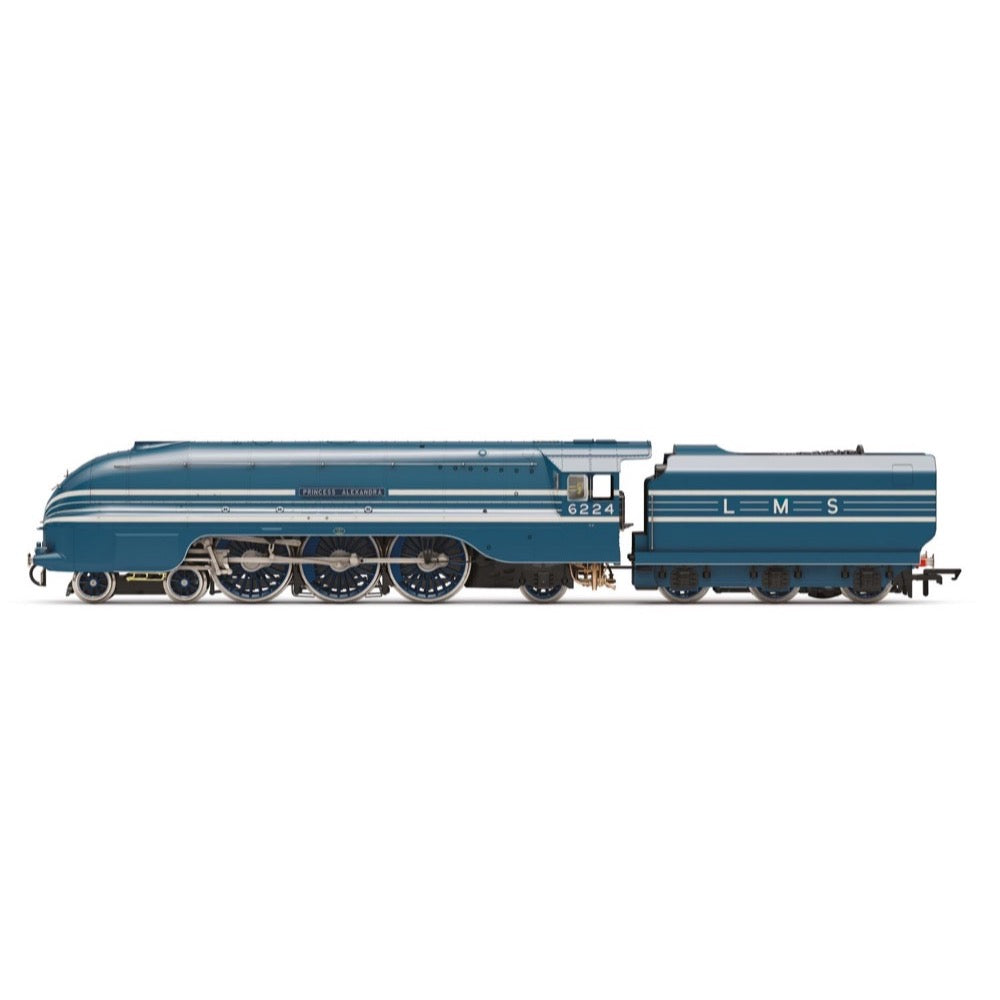
Hornby R3715 LMS Princess Coronation Class 4-6-2 6224 Princess Alexandra - Era 3
158.00
$
<p>6224 Princess Alexandra left Crewe Works for Camden Shed on 17 July,1937, where it remained until 16 September, 1939 at the outbreak of war. Briefly put into storage at Bletchley, Princess Alexandra re-entered traffic on October 21, 1939.</p>
<p>Sent on loan to Polmadie on 25th November, the locomotive remained allocated there until its withdrawal in October 1963 and while there, the streamlined casing was removed on 27 June, 1946.</p>
<h3>Specifications</h3>
<ul>
<li>Colour: Blue</li>
<li>Coupling: NEM</li>
<li>DCC status: DCC Ready 8 pin socket</li>
<li>Finish: Pristine</li>
<li>Gauge: OO</li>
<li>Livery: aledonian Blue</li>
<li>Minimum radius curve: 2nd Radius (438mm)</li>
<li>Motor: 5 Pole Skew wound</li>
</ul>
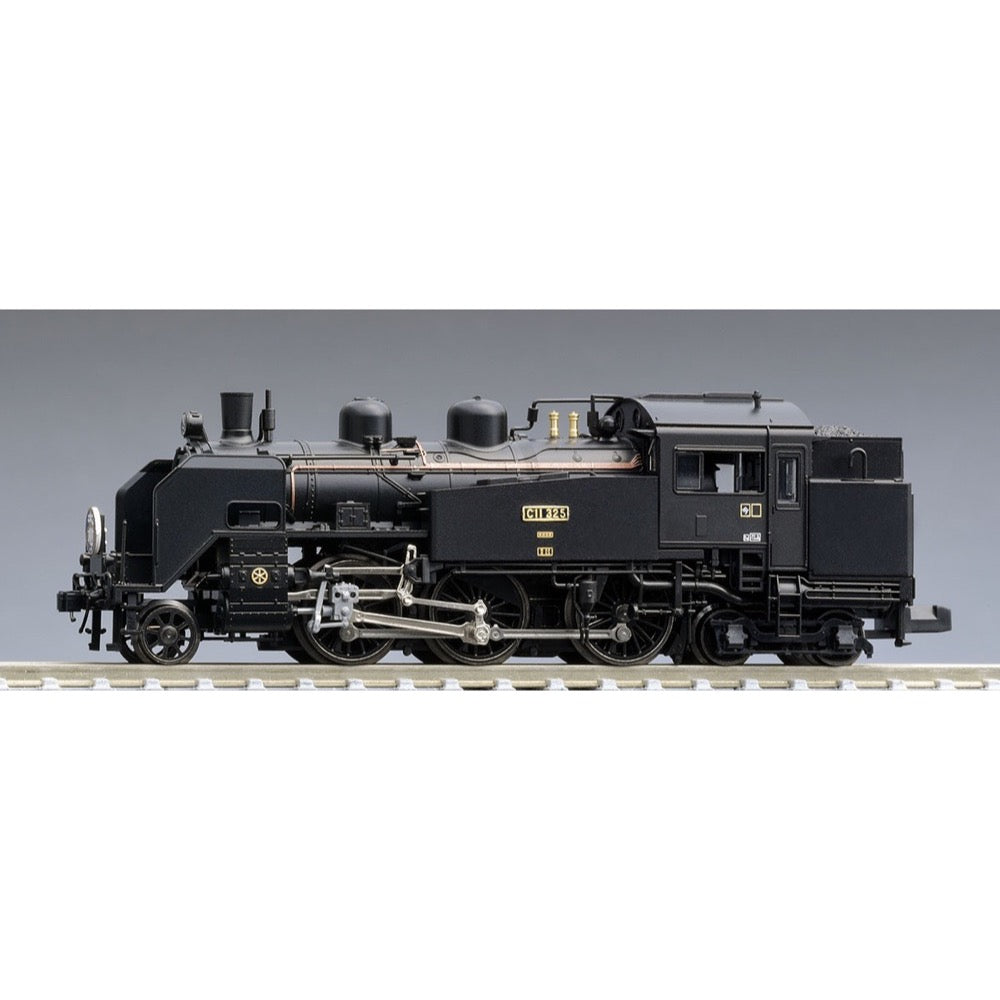
Tomix 8618 N 8618 TOBU Railways C11 Steam Engine No.325
92.00
$
<p>Tobu Railway's "SL Taiju" is a steam locomotive train towed by a C11 that began operating between Shimoimaichi and Kinugawa Onsen in 2017. In 2020, the No. 325 locomotive from the Moka Railway was purchased, and in 2022, the No. 123 locomotive began commercial operation, and the train is now operated with three steam locomotives.</p>
<p>The C11 No. 325 locomotive was manufactured in 1946 and was initially used at the Chigasaki Locomotive Depot before being transferred to the Yonezawa Locomotive Depot where it was used until 1973. After being scrapped, it was preserved in static form, but in 1998 it was restored to working order and was used as a locomotive for the "SL Moka" on the Moka Railway along with the C12-66.</p>
<p>In 2020, it was transferred to Tobu Railway, and with the addition of an antenna and jumper plugs, it is now used as a locomotive for the "SL Taiju".</p>
<h3>Features</h3>
<ul>
<li>High Grade (HG) specifications</li>
<li>Newly manufactured rear end beam with added jumper plugs is reproduced</li>
<li>Newly manufactured rear coal bunker with Tobu radio antenna installed is reproduced</li>
<li>Cab roof skylight can be opened and closed</li>
<li>Cab window is reproduced in open position</li>
<li>Boiler handrails are reproduced as separate parts</li>
<li>Headlights are equipped with a constant-light board</li>
<li>Arnold coupler already installed on the coal bunker side</li>
<li>Dummy coupler already installed on the front side, Arnold coupler included</li>
<li>Automatic coupling TN coupler included</li>
<li>Release lever already installed as a separate part</li>
<li>Driving wheels and leading wheels are reproduced as spoke wheels</li>
<li>Trailing bogie is fitted with integrated plate wheel center wheels</li>
<li>Black wheels used</li>
</ul>
<p><em>Passing radius is C243 or more</em></p><h3>Contents</h3>
<p><strong>Vehicles</strong></p>
<ul>
<li>C11-325</li>
</ul>
<p><strong>Accessories</strong></p>
<ul>
<li>Runner parts: Number plate</li>
<li>Runner parts: Grab bars, air hoses, etc.</li>
<li>Runner parts: Signal flares</li>
<li>Runner parts: Signal lights</li>
<li>Runner parts: Arnold dummy coupler for multiple units</li>
<li>Runner parts: Self-coupled TN coupler for multiple units</li>
<li>Runner parts: Head mark</li>
<li>Parts: Jig</li>
</ul>
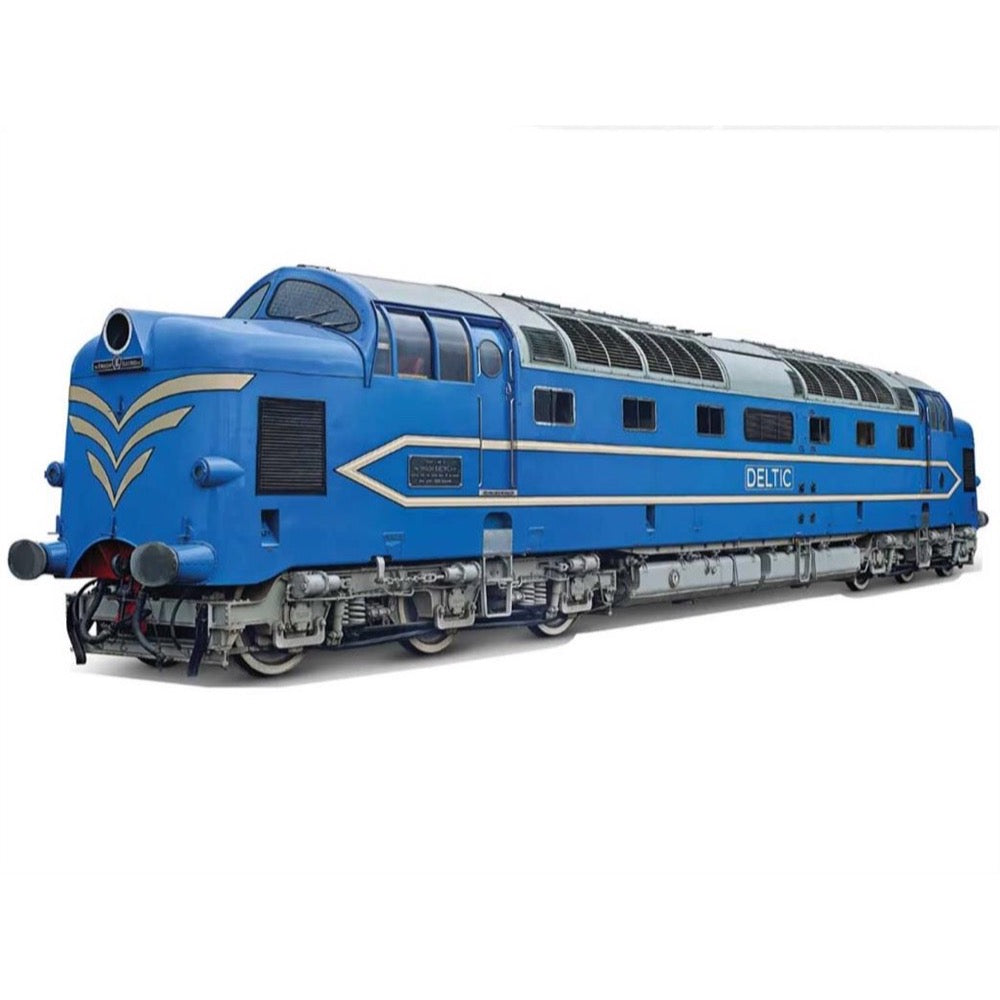
Hornby Dublo R30297 OO BR English Electric DP1 Co-Co DP1 Deltic Era 4 Locomotive
262.00
$
<p>The word 'Deltic' will likely mean different things to different people and indeed it should as the word does mean a great many things. The Deltic was, initially, a valveless diesel engine designed to be fitted into some of the Royal Navy's smaller ships, such as the 'Dark' class of 1954.</p><p>These engines, or a version of them would also find themselves fitted to a test bed for a new class of British diesel engine in 1955, christened as DP1 but nicknamed 'DELTIC' after the engine. This nickname may have been enforced on the public by the designers of the locomotive, who has 'DELTIC' painted on the side of the model in the same cream as the lining nameplate style.</p><p>DP1 was built by Dick, Kerr and Co. in Preston, and would be outshopped in 1955 in a unique colour scheme of baby blue and cream. The was not initially a stylistic decision, with the cream lines on the side being more than paint, with the paint applied over aluminium strengthening beams on each side with the intention to break up what would otherwise be a very tall, straight slab sided locomotive.</p><p>DP1 would be in service with BR in its original colour scheme and condition until November 1960, when an enormous oil leak was discovered on one of the engines, something that could lead to terminal engine failure if not addressed. The locomotive was sent back to English Electrics works however work on the locomotive was not given the go ahead with the model being officially withdrawn from BRs locomotive roster in 1961.</p><p>The locomotive would be stored for a few years before being donated to the science museum in 1963. The locomotive has never run in preservation, largely due to the fact that it has either been inside on static display in various museums and due to the fact that engine components were removed after the failure with the engines fitted to the resulting Class 55 'Deltics' being sufficiently different enough to prevent the pool of BR spares to be used.</p><p>In 2023, the Hornby Dublo Deltic model fills a hole in Hornby history, with the DP1 Deltic featuring on the cover of the 2nd edition catalogue in 1960, but never actually being made in physical form unlike the Class 55 Deltic, which did receive a Hornby Dublo incarnation. This model is fitted with a diecast body, 21 pin DCC decoder socket for digital operation, a 5 pole motor with dual flywheels and dual bogie drive. This is surely, not a Dublo model to be missed.</p><h3>Specifications</h3><ul>
<li>Item Length - Without Packaging (cm): 29</li>
<li>Item Width - Without Packaging (cm): 3.5</li>
<li>Item Weight - Without Packaging: 0.8</li>
<li>Item Scale: 1:76 Scale 00 Gauge</li>
<li>Finish: Painted</li>
<li>Colour: Blue and Cream</li>
<li>Gauge: OO</li>
<li>DCC Status: DCC Ready 21 pin socket</li>
<li>Operator: BR</li>
<li>Designer: English Electric</li>
<li>Wheel Configuration: Co-Co</li>
<li>Livery: BR Deltic Blue</li>
<li>Minimum Curve (mm): Radius 2</li>
<li>Motor: 5 Pole Skew wound</li>
<li>Number of Parts: 1</li>
<li>Buffer Type: Sprung Metal Buffers</li>
<li>Coupling Type: NEM Tension Lock</li>
<li>Hornby Decoder Compatibility Primary: HM7000-21TXS: Bluetooth® & DCC Sound Decoder (21-pin)</li>
</ul>



